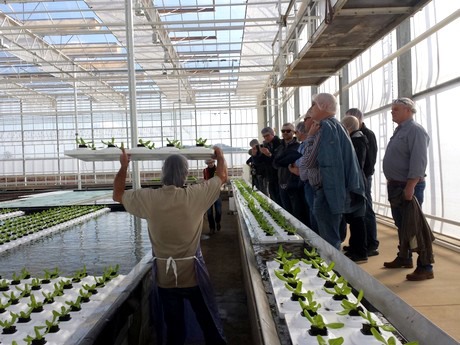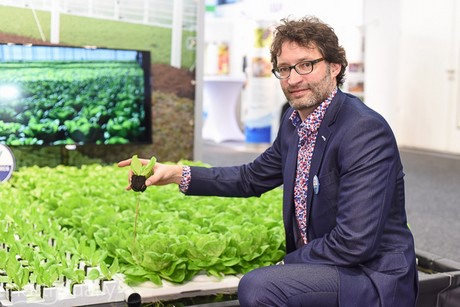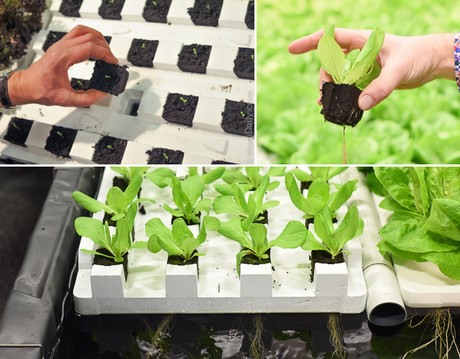
While most hydroponic lettuce systems lately are focusing on complete automation, the system from Dry Hydroponics installed in Livingston is still using manual labor to handle the trays outside the pond. "We believe that a heavy investment in machinery to automate the system and collect the rafts is not always needed," said Maurice van der Knaap of Dry Hydroponics. He explained that in this set up only one worker is currently overseeing the production at the Tennessee greenhouse. On one hectare this person places new production trays with young plants into the ponds and places the trays with fully grown lettuce in a special canal with a stream of water which transports the rafts to the processing area.
One worker is currently enough to handle all the work inside the production of one hectare greenhouse. "However, we made a layout for the grower to expand the production to a total of five hectares. These five hectares are designed in a way that only two people would be needed to manage all the work from transplanting to collecting rafts with fully grown crops," said Maurice van der Knaap.

Maurice van der Knaap of Dry Hydroponics at the Fruit Logistica last week.
In December last year, a group with European growers visited the greenhouse of Tianmura & Antle in Tennessee. They could see how the Styrofoam rafts with lettuce were handled with only a small amount of labour. "We still believe Styrofoam is the best solution for this type of cultivation," van der Knaap explained. "It's not only a very light and low-cost material, but it also results in a much better growth as it creates a layer of isolation on the pond. As a result of this the water stays at the desired temperature, preventing the roots against temperature-related stress."

The propagation raft system of Dry Hydroponics.
During the tour, the visitors could also see Dry Hydroponics propagation system; smaller propagation rafts can be filled with growing media with the help of a special contra-tray. "No pots or prefab propagation blocks are needed. It has the functionality of a press-pot, but it can be made without a press pot machine. You just fill the trays and off you go."
For more information:
Dry Hydroponics
Maurice van der Knaap
mvdk@dryhydroponics.nl
skype: cultivationsystems
www.dryhydroponics.nl
